We're All Viewsers Now - Evan Shapiro-IFC

Welcome Evan Shapiro, our newest MediaBizBlogger.
I just started my second semester teaching a weekly class on The TV Industry, at NYU/Stern School of Business. There are 70 undergraduate students in the class, all between 18 and 21, of varying ethnic and region origin, but (I'd say) pretty much uniformly upper middle class.
Before the semester began, I surveyed the students to see how they used television. Much of what I found is what you might expect; but there were some surprising results as well. First, the students are the epitome of the multi-tasking, always connected modern media user. Here is a breakdown of the various video media devices they own and use (this is a slide I showed in class, hence 'your devices'):
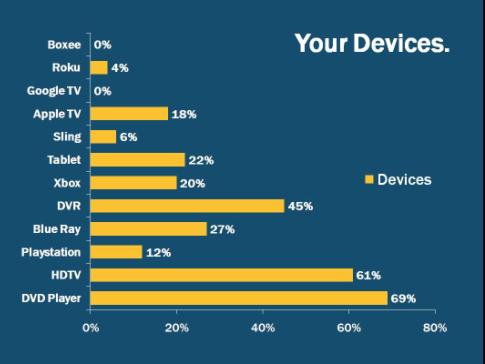
And this is a breakdown of the amount of TV they watch each week and the ways they watch it:
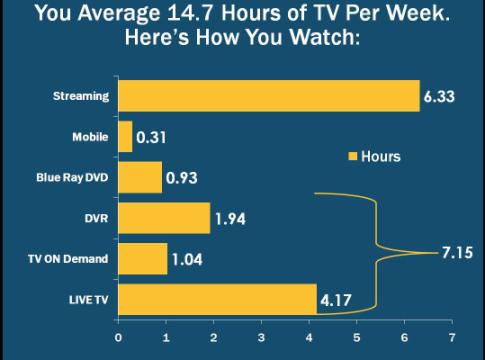
43% of their TV viewing is streamed online. While not entirely unexpected, it is kind of spectacular. Interestingly enough, however, 49% of their viewing comes through some sort of pay TV service – DVR, VOD or Live, via a cable subscription – and 28% of their viewing is live, with no time-shifting and/or fast forward. It should also be noted that they are watching 15 hours of TV overall per week – and they include streamed viewing as part of that whole.
On February 9, The New York Times wrote about a Nielsen study that showed TV Viewing among younger demos had dropped precipitously over the past year. However, for some reason, according to this article Nielsen did NOT take online viewing – on iPads, computers or phones – into that account. Why? For some reason Nielsen, does not consider shows watched on something other than a television as 'TV'. This is a misguided point of view – one that undercounts the influence and importance of the viewing done online, and devalues the eyeballs that watch on those platforms.
The issue is we don't yet have a truly accurate way to measure those eyeballs. True C3 does measure viewers captured on some other platforms within three days of premiere, but only those viewers who see the show exactly as it aired on TV – which for most shows, is a small percentage of the whole.
Take a look at this…
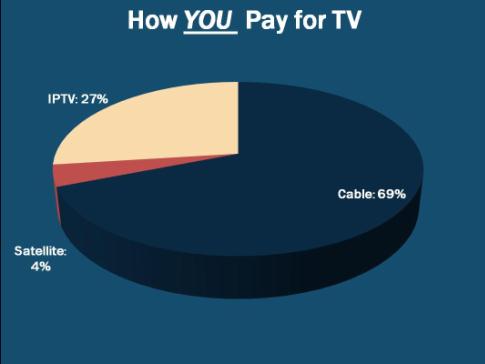
27% of the students use Over The Top as their source for most TV and 73% use some form of cable or DBS. You must remember that a percentage of these students live in dorms, so may not have a practical use for traditional Pay TV, yet an overwhelming majority still pay for TV subscriptions. When I discussed this with them in class only five of the students in the class reported using Over The Top as their primary source for TV, often using TV in common rooms or elsewhere as a primary source, and almost all reported using over the top TV predominantly as "catch up" device.
Additionally, all but one of the students said that they would subscribe to cable or satellite TV, if the pricing was more in line with their incomes.
Considering ALL of that context, these young, smart, upscale, tech-savvy students – predictors for the future of media usage – have incredibly traditional tastes and habits for their TV.
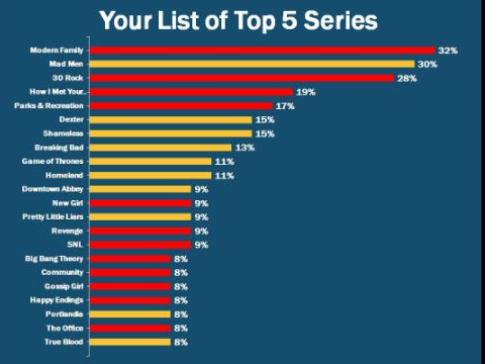
While I was happy to see Portlandia (on IFC) tied with Big Bang Theory, I was pretty much shocked to see that four of their five top rated series, and 12 of their top 22, were on Broadcast TV. That said, the cable networks – and specifically those that cater to sophisticated, urbane audiences (way to go AMC) also did exceptionally well.
And when asked 'what networks could you NOT live without', those networks who cater to that sensibility also did pretty well – with NBC punching way above its weight (based on ratings performance), and cablers such as AMC, Bravo, HBO and Showtime doing quite well.
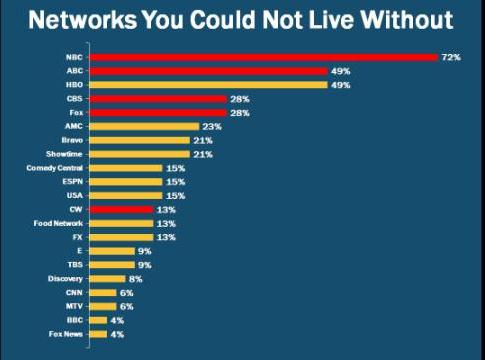
I am not trying to say that my sample of 72 NYU students is more accurate than Nielsen's nationwide sample. But this sample demonstrates a far more complex picture of the future of TV viewing than does the NY Times' oversimplified headline that 'young people are watching less TV'. In fact, Nielsen put out a different report on the same day that offered a far more nuanced account.
Television is not a screen or a box. Prime Time is not a slot on a schedule. TV is an experience; an environment. Prime Timeis a feeling, associated with quality serialized video content. TV is not the act of watching something; it is the emotional engagement the audience gets while watching it.
Despite the much prophesized displacement of television by the internet, PlayStation, Netflix or iPad, no new technology has yet replaced television as the dominant force in entertainment. Yes, the couch has been replaced by Facebook and the water cooler by Twitter, yet "Prime Time TV" content is being consumed in record numbers – even and especially by young people. More people are watching more TV on more devices than ever. Forrester research stated late last year that we've created 25% more TV time over the past 5 years – that equates to 15 additional days of TV watching each year.
No longer tied to a specific box or room, TV now reaches audiences in and on an array of times, places, devices and contexts, creating asymmetrical viewing patterns within a universe of diverse niches. Unlike radio, which was replaced by a new technology that combined sound and picture, nothing – no new technology or experience – has replaced television. If anything, just the opposite has happened… The only thing that has replaced Television is TV itself.
But our measurement has yet to catch up. As TV evolves from a business where we 'push' content at consumers, to one where they 'pull' content into their lives at their convenience, we MUST also evolve from measuring VIEWERS to measuring VIEWSERS. I believe strongly that Advertisers would rather use TV than any other medium – it is the most popular media on earth, and the single most powerful way to send a message to consumers. (Why else would E Trade and Hulu choose to spend millions to advertise in the Super Bowl?) But we must make our medium easier to use.
John Wannamaker once said "I know half my marketing money isn't working, I just don't know which half". It's incumbent upon us as an industry to make that untrue about TV. Pinpoint measurement across platforms, dynamic ad insertion into our programming throughout its lifecycle and the ability to accurately see what is working and what is not are must-dos in the new media ecosystem. And we have to come together to put them in place.
I have two teen age daughters. I teach 72 undergrads each week. I know for certain that young people are not watching less TV. We just have to do a better job of measuring them when they do – we must evolve from the business of viewers into a business of VIEWSERS.
As president of IFC, Evan Shapiro oversees the strategic and creative direction of the network, a distinct cable destination known for its indie perspective on what's worth watching and doing in alternative culture. Named to the position in June 2008, he has had a tremendous impact in strategically evolving the IFC brand in response to the rapidly changing programming delivery technologies and industry trends. Evan can be reached at Esshapiro@ifcsun.com.
Read all Evan's MediaBizBloggers commentaries at Long Live TV.
Check us out on Facebook at MediaBizBloggers.com
Follow our Twitter updates @MediaBizBlogger
The opinions and points of view expressed in this commentary are exclusively the views of the author and do not necessarily represent the views of MediaBizBloggers.com management or associated bloggers. MediaBizBloggers is an open thought leadership platform and readers may share their comments and opinions in response to all commentaries.


